MOTOCROSS ACTION’S 2010 MXA 450 SHOOTOUT: REAL TESTS THAT GO STRAIGHT TO THE CHASE
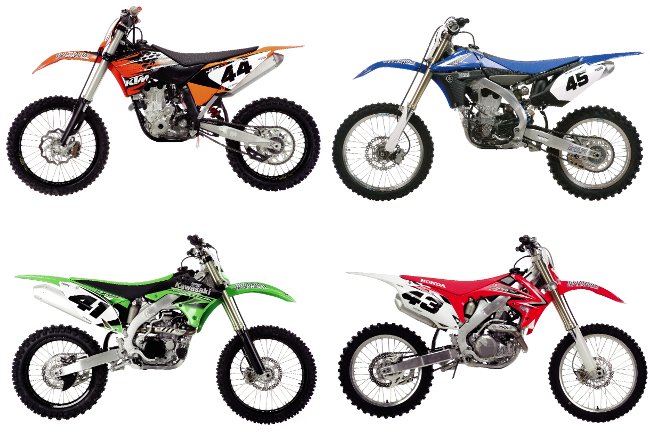
Let’s cut to the chase, which in Hollywood parlance means let’s skip ahead to the action-packed part of this horse opera. You don’t need to be the Amazing Kreskin to realize that motocross racers read shootouts for three reasons:
(1) Guide: To find out what the best bike is before they plunk down the filthy lucre they earned in the corporate sweat shop.
(2) Confirm: To confirm that the bike they already own is as good as they think it is?after all, they invested $8000 in the decision.
(3) Scoff: To read bad things about the bikes they don’t own and would never buy. These readers neither own nor plan to buy that brand, they just want to be lookie-loos at a train wreck.
Okay, we did not cut directly to the chase. Instead, we foolishly tried to offer insight into the motivations of the actors involved and help the plot line along with a little narrative. This is, however, where we do cut to the chase.
There are four machines in contention for the 2010 MXA 450 Shootout: the Honda CRF450, Kawasaki KX450F, KTM 450SXF and Yamaha YZ450F (we left out the 2010 Suzuki RM-Z450 and the Husqvarna TC450 because they were not available for testing). One of the four bikes named above is going to win?that we can promise you. But before you blindly follow our lead (and rush out to buy the winner), we suggest that you look closely at all four bikes in this test?and then look closely at yourself, your riding style and your real needs.
While the MXA wrecking crew anointed one bike as the best, the bikes that didn’t win have their own seductions?good traits, advantages and benefits that could outweigh the MXA wrecking crew’s fairly straight-forward approach to racing performance. And make no mistake about it, we aren’t looking at these four bikes for their play riding, offroad or professional practice riding prowess. We are interested in purebred racing performance, and that is the basis on which we evaluated these bikes.
If you want more info about each bike (including suspension settings, jetting info and setup tips), click on the underlined blue headline above each bike.
FOURTH PLACE: 2010 HONDA CRF450
Fourth place. Say it isn’t so. It was only two years ago that the 2008 Honda CRF450 owned the top spot in the MXA 450 Shootout. How could the winner slip two places on the hit parade in two short years? The answer is simple?they swung for the fences. Starting with the 2009 CRF450, Honda wanted to stamp their seal of authority on the 450 class. They went all-out with a new engine, new frame, new geometry, new suspension and new approach. In short, Honda kicked out the jams to build an incredibly creative and inventive machine. If all the pieces had fit together, the 2010 CRF450 would be sitting on top of the heap today. But the pieces didn’t fit.
It’s not that any single part of the 2010 CRF450 is atrocious, only that virtually every change Honda made to the machine was an unfulfilled promise. Fuel injection was supposed to usher in a new era of jetting-free usability, but the fuel-injected 2010 CRF450 makes the least horsepower of any bike in this test and flattens out the soonest. The switch from Showa forks to Kayaba forks was supposed to put an end to the old midstroke harshness?it did, but replaced it with marshmallow softness. And, when something did work well, like the Kayaba rear shock, there were other factors that hampered its overall performance. A very good shock was left to overpower the undersprung front forks. Honda’s revolutionary chassis, in which the front wheel was moved rearward while the rear axle came forward, could have been the lightning-rod handling package of the decade. Instead, it stinkbugged, oversteered and suffered from balance issues.

It’s not that Honda’s engineers didn’t understand the critical issues that faced the 2010 CRF450?they did. And they tried to fix them (within the limits of shrinking budgets and the fact that few dollars are ever set aside to rebuild a machine that was brand-new one year earlier).
For 2010, Honda remapped the ignition to fight criticism that the 2009 powerband was too abrupt and herky-jerky off the bottom. It was a valiant effort, but now the powerband is very mellow (and has about three horses less than the KTM 450SXF).
The forks and shock were revalved to make the front end stiffer and the rear end softer in their respective midstrokes. The result was a better shock that has yet to work in unison with the still overly soft front forks.
There is little doubt that Honda’s engineers took a chance on redefining what a motocross bike is all about. We can’t fault their reasoning, logic or engineering?only their execution. Fourth!
THIRD PLACE: 2010 KAWASAKI KX450F
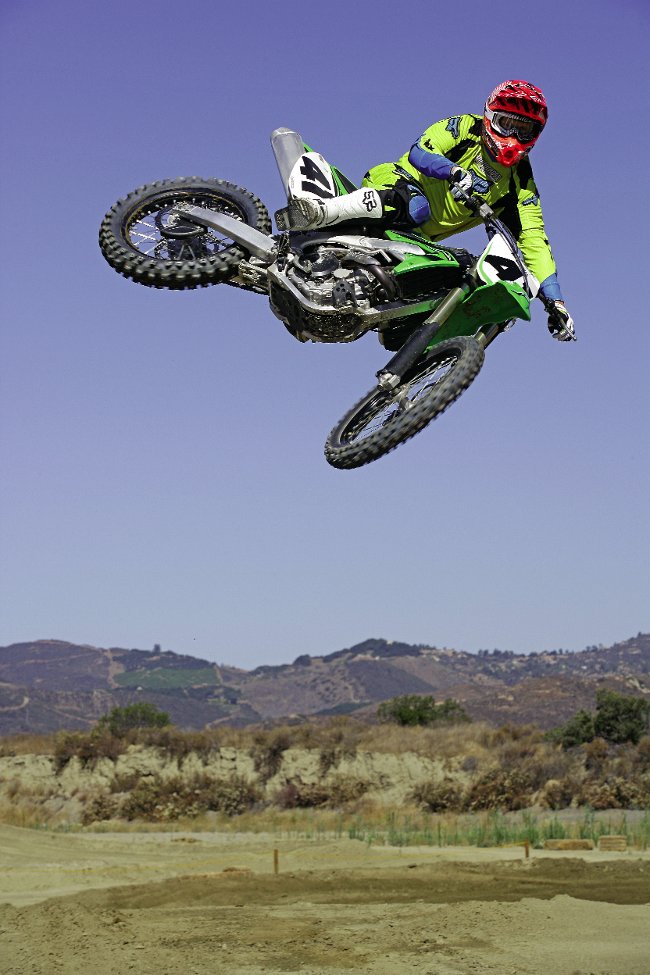
Third place. Middle of the road. As you may remember, the 2009 Kawasaki KX450F won last year’s MXA 450 Shootout. Additionally, the 2010 Kawasaki KX450F is a better machine than its 2009 predecessor?all of which makes Kawasaki’s plunge from first to third seem mind boggling, but we can explain it pretty easily.
Last year, the KX450F just eked out its victory over the tall, bulky, four-speed, 2009 KTM 450SXF. This year, the KTM is sleeker, lower, more powerful and equipped with a five-speed tranny.
Last year, the KX450F was ranked well above the 2009 Yamaha YZ450F. You don’t need to be Columbo to understand how the powerful KX450F whooped up on a 2009 YZ450F that gave up five horsepower in the midrange to the green machine. This year, the YZ450F is all-new and vastly improved.
Last year, the KX450F was rated above the Honda CRF450?and it still is.
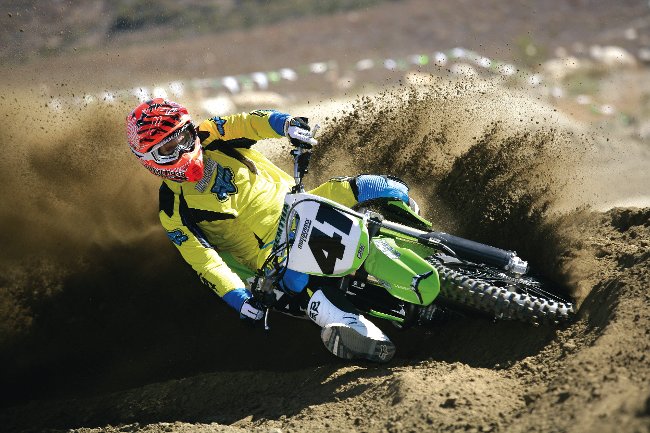
So, apart from the MXA wrecking crew believing the the 2010 KTM 450SXF and Yamaha YZ450F are better all-around machines, why should the 2010 KX450F have won this shootout? One reason and one reason only?power. The KX450F has a fabulous engine. It is strong off the bottom without being jerky. It is usable in the middle with a potent, broad and steady pull. It is capable of pulling through the midrange, unlike any other EFI engine, and making competitive power to 9500 rpm. It makes the most peak horsepower of any Japanese 450, and for riders who like potent low-to-mid engines, the KX450F powerband is unbeatable. If you want the best race engine possible, this is the logical choice.
Which again brings us to the question of why the KX450F didn’t win the 2010 MXA 450 Shootout. We have to give kudos to Kawasaki’s engineers for trying to fix the flaws that MXA pointed out. They haven’t been asleep at the wheel. Over the past four years, they have trimmed weight, shortened the wheelbase, revised the fork offset, changed the main spars, revised the rising rate, altered the head angle and moved the swingarm pivot upwards. From a technical standpoint, every change that Kawasaki made should have resulted in a better chassis. Unfortunately, it didn’t.
This is a bike in serious need of a diet, makeover and downsizing. The seat height, weight, girth and mass need to come down. The gaps between the gears are long overdue for change. The thickness of the plastic should be upgraded. The only part of the 2010 Kawasaki KX450F that wouldn’t benefit from being preshrunk is the powerband. It is big and beautiful. Third!
SECOND PLACE: 2010 YAMAHA YZ450F
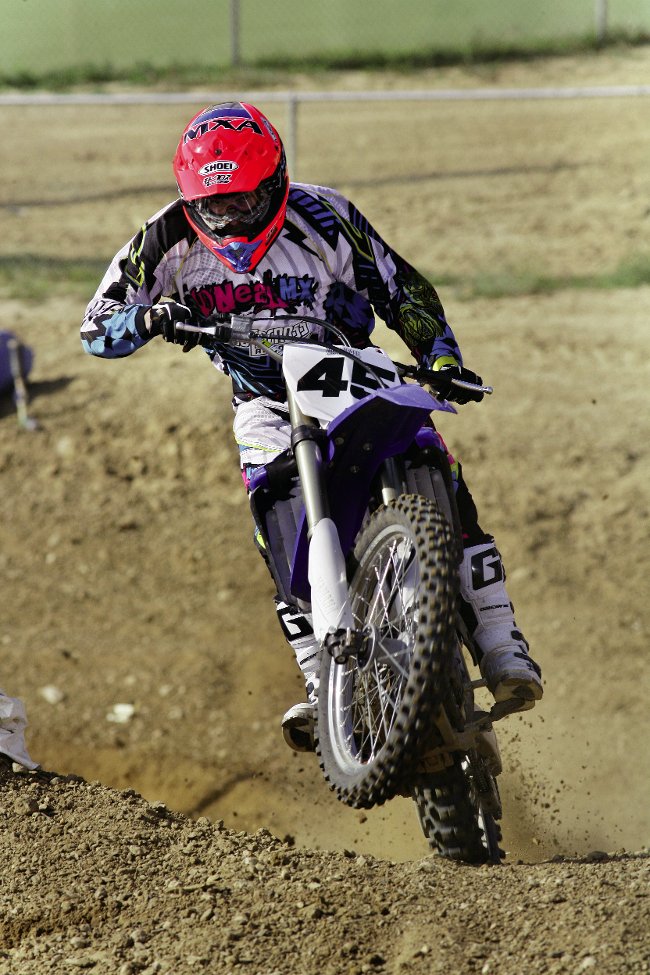
Second place. Second best in class. The 2010 Yamaha YZ450F is a solid machine with innovative credentials. And while most motocrossers would expect the “revolutionary” YZ450F to take the top step of the 2010 MXA 450 Shootout podium, that didn’t happen. Why not? A cautionary tale emerges when reviewing the history of motorcycle manufacturers who pursued the newest, latest, greatest and most revolutionary ideas. The biggest danger is what Thorstein Veblen’s 1915 theory called “the penalty of taking the lead.” In a motorcycle industry nutshell, Veblen theorized that a company that introduces creative new ideas runs the twofold risks of (1) making mistakes and (2) paving the way for its competitors to learn from those mistakes.
Enter the 2010 Yamaha YZ450F. Never has a production Japanese motorcycle looked so much like an entry in the MIT Science Fair than the reverse-cylinder, downdraft, offset crankshaft, tilted top-end, 2010 YZ450F. With so many ideas integrated into one piece of machinery, the possibility of a game-ending glitch is immense.
Surprise! In spite of the caveat that “first-year bikes” should be avoided until the bugs are worked out, Yamaha seems to have done everything right. Nothing has flown off in flight or gone crunch in the night. And most importantly for Yamaha’s engineers, the Gyro Gearloose aspects of the bike (centralization of mass and harnessing of the engine’s rotational inertia) paid big dividends in how the chassis feels in motion.
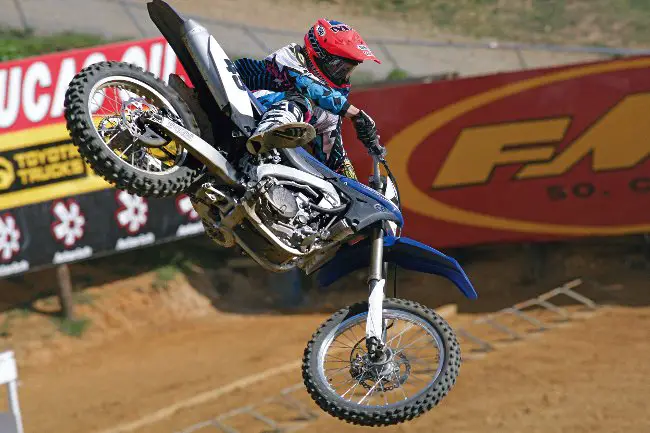
So, you might be asking, if all the Wernher Von Braun stuff is so great, why didn’t the 2010 Yamaha YZ450F win the 2010 MXA 450 Shootout?
The answer is simple, but multifaceted. First, at its heart, the YZ450F must be defined by how it works, not by the Ph.D required to explain it. Second, it has the typically abrupt, low-to-mid fuel-injected powerband; is relatively flat on top; and does not come near the horsepower output of the KX450F or 450SXF. Third, while it feels light in roll, pitch and yaw, it is actually five pounds heavier than the 2009 YZ450F (and ten pounds heavier than the 2010 CRF450). Fourth, it is the second-best handling 450 in this group, but the front end has a light, no-bite feel on the entrance to turns. Fifth, there is an air filter in there somewhere, but you have to be a safecracker to get to it. Sixth, buy ear plugs before you ride this bike. The intake noise emanating from the airbox will drive you batty.
The 2010 Yamaha YZ450F is a good motocross bike. Its biggest blessings are the superb Kayaba SSS suspension and the free MENSA membership that comes with owning one. Second!
First place. The best in class. The first-ever MXA 450 Shootout win for a modern-era European manufacturer (although KTM did win MXA‘s 125 Shootout back in 2004). This is big news, and it should startle the powers that be around the world (not to mention the vocal anti-KTM crowd).
A few years ago, MXA sat down with the heads of KTM to discuss future developments. At this meeting, KTM asked if it would ever be possible for them to win an MXA 450 Shootout. Our answer shocked them! We said yes, they could, but to do so they would have to “sweat the small stuff.” By that, we meant no more wood screws holding the side panels on, no more leaking gas caps, no more 11mm bolts, no more concrete seats, no more slack head angles, and most of all, no more horrible Dutch-spec’ed WP suspension settings.
“But what about the no-link rear suspension?” they asked. “Won’t that stop us from winning?” They looked surprised when we said that the rear suspension doesn’t care how its rising rate is created, only that the rate change works.
Nothing more was ever said about that meeting, but each year KTM made changes. Behind the scenes, they quietly moved all WP development out of Holland. They opened up a test division at the U.S. offices (and started listening to it). From 2007 to 2009, KTM fixed the gas cap, banished the majority of wood screws and 11mm bolts, switched to magnesium outer cases, added dual-stage ignitions, perfected their electric-start system and lightened the complete drivetrain. And for 2010 they added a five-speed transmission, changed the fork offset, shortened the shock, lowered the frame 10mm, and reduce the decibel level to a class-leading 93.3 dB.
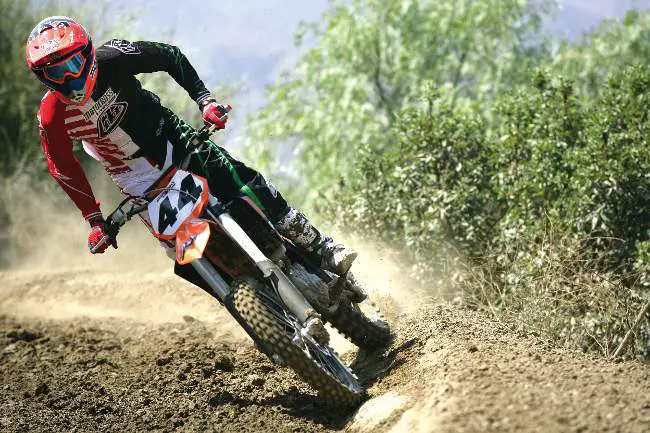
The list of mods is made all the more remarkable by the fact that the engine pumps out the most peak horsepower of any bike in the class. From the midrange on up, the 450SXF has no peers. It’s not just the power output that is impressive?it is, by far, the best all-around handling bike made in 2010.
The money and time that KTM spent getting to their first-ever MXA 450 Shootout victory is evident in every area. It’s equipped with class-leading brakes, a hydraulic clutch, easy-access airbox, Renthal Fatbars, eccentric chain adjusters, quarter-turn gas cap, hydraulic cam chain tensioner, hand-operated fork compression adjusters and the only electric starter in the field.
This bike is the best because it makes the most horsepower, handles better than the other three bikes, is blessed with the most powerful front brake, has a bulletproof clutch, offers workable suspension and can be started with one finger. First!


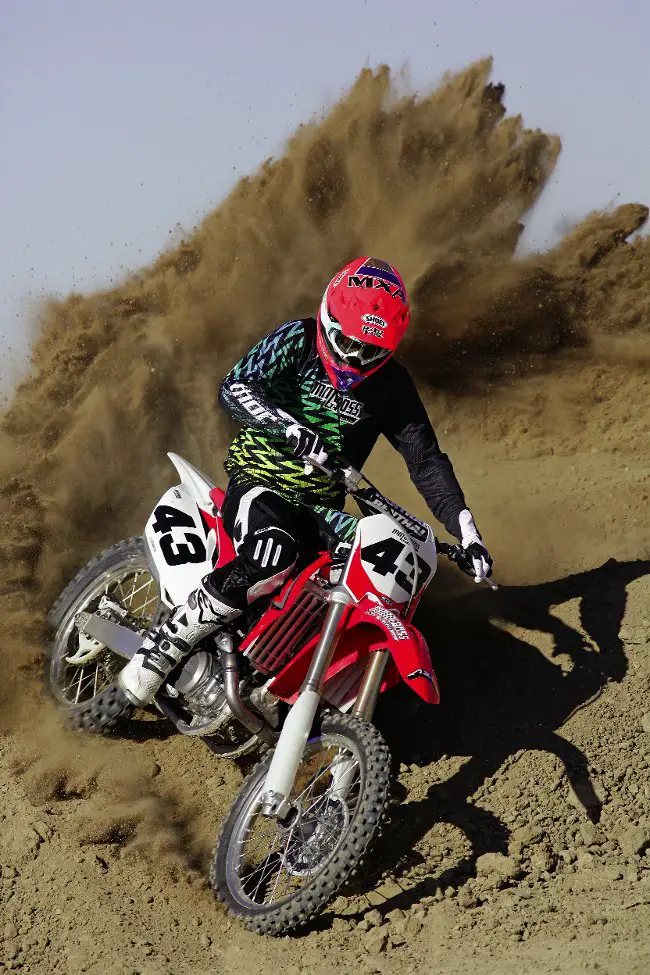


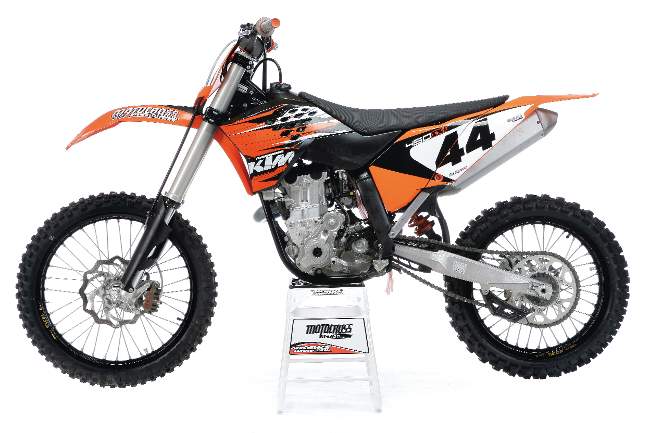


Comments are closed.